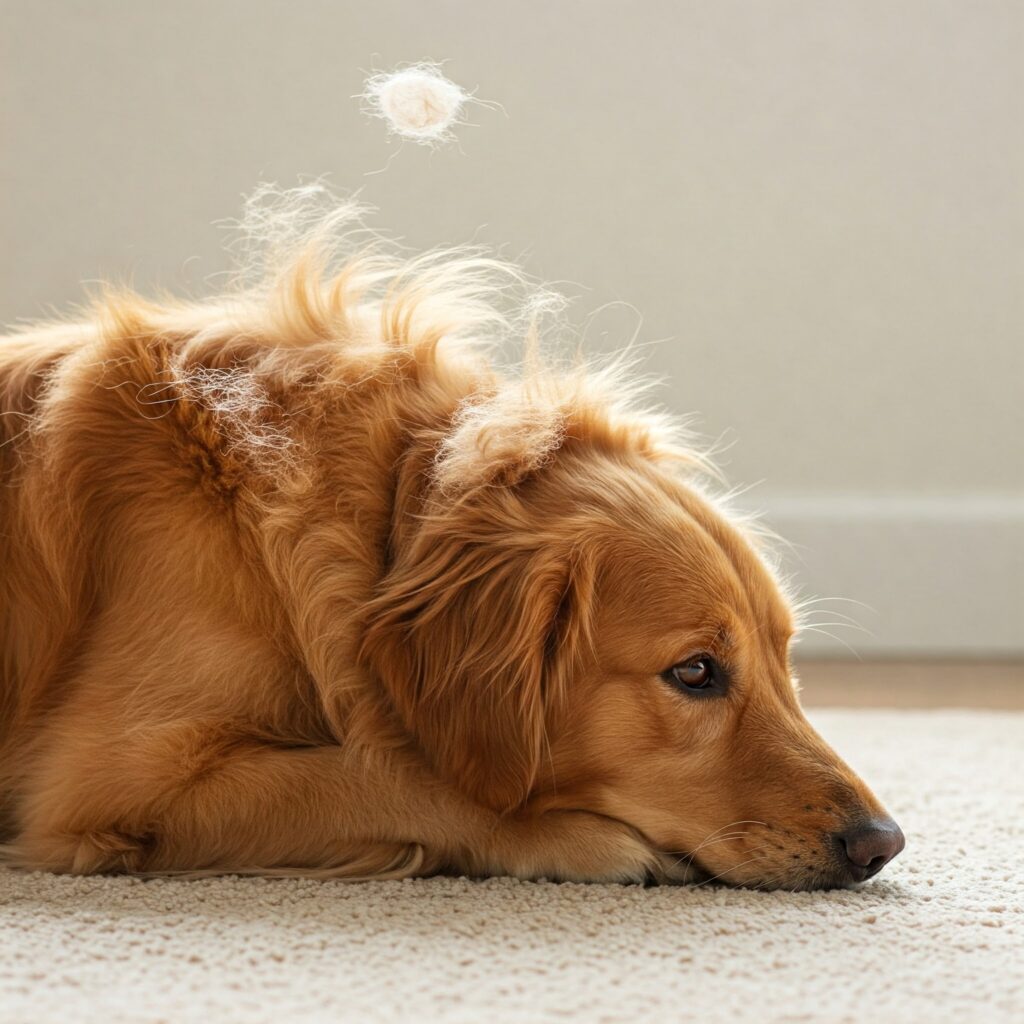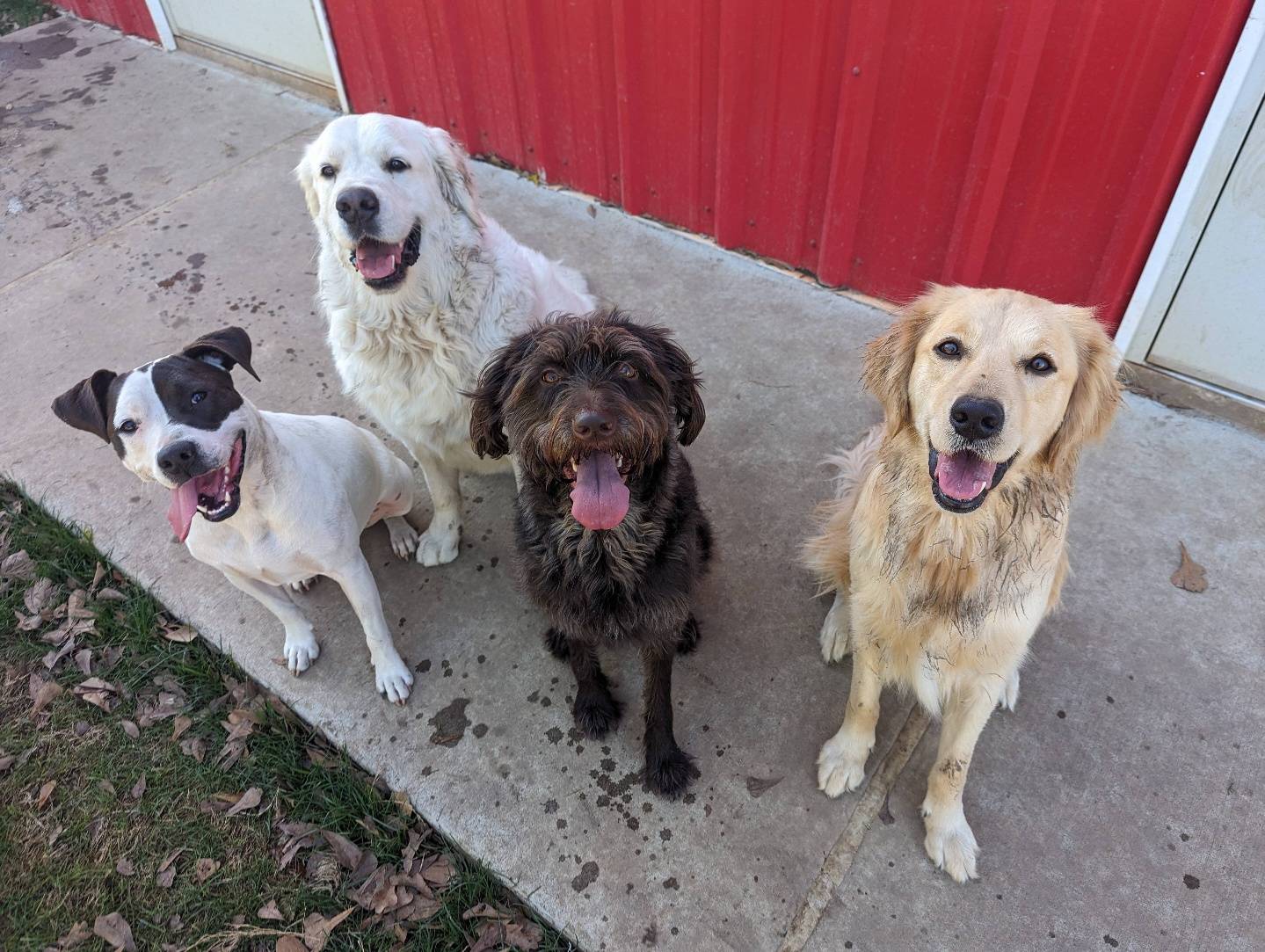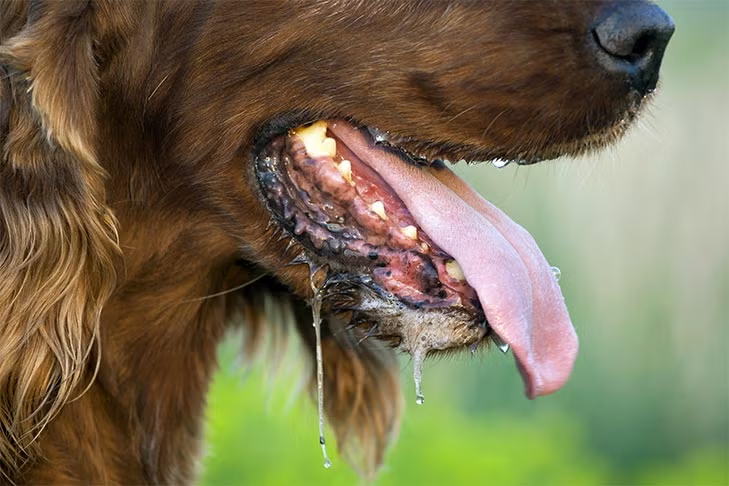As spring rolls in and nature begins to bloom, dog owners across the country start to notice an all-too-familiar occurrence: a sudden surge in fur around the house. It’s on the couch, the rug, your clothes, and pretty much every surface your furry friend graces. While this seasonal shift can feel like a fluffy invasion, it’s actually a natural and healthy part of a dog’s biological rhythm. Understanding why dogs shed more during the spring and how to manage it can make a big difference in keeping both your home and your dog feeling fresh and clean.
Shedding is a process that many breeds go through as their bodies adjust to changes in temperature and daylight. In the winter, dogs tend to grow a thicker, denser coat to help insulate against the cold. But once spring begins and days become warmer and brighter, that same protective layer becomes too much. To stay cool and comfortable, dogs begin to shed their winter coat in favor of a lighter summer one. This process, often referred to as “blowing coat,” is most noticeable in breeds with double coats, like Golden Retrievers, Huskies, and German Shepherds, but it can happen to any dog to varying degrees.
The Science Behind the Fur
The timing and intensity of shedding are largely governed by changes in daylight, also known as photoperiod. As the days lengthen, your dog’s body reacts by adjusting hormone levels that influence hair growth and shedding cycles. While temperature plays a role too, it’s the increased exposure to sunlight that primarily triggers the shedding response. This is why even indoor dogs, who may not experience dramatic temperature shifts, still shed heavily in the spring.
Another factor to consider is breed. Dogs with thick undercoats go through a much more intense shedding cycle than dogs with single-layer coats. For example, a Labrador Retriever might shed clumps of soft, fluffy undercoat as the seasons shift, while a Greyhound might only shed a fine dusting of hair. Age, health, and overall nutrition also affect how much a dog sheds. Puppies and seniors may shed differently than adult dogs, and dogs with skin conditions or nutritional deficiencies might experience hair loss that is more than seasonal shedding.
Is Shedding Ever a Problem?
It’s important to distinguish between normal seasonal shedding and signs of an underlying issue. If your dog is losing fur in patches, scratching excessively, developing bald spots, or if the coat appears dull and lifeless, it could point to allergies, parasites, infections, or other medical problems. Normal spring shedding involves a general thinning of the coat and an increase in loose hair but should not involve redness, inflammation, or open sores. If you’re unsure whether your dog’s shedding is normal, a visit to the vet can help rule out any concerns.
Healthy seasonal shedding results in a lighter, cooler coat that keeps your dog comfortable as the temperatures rise. In fact, some dogs even seem more energetic and playful once they’ve shed their heavy winter coats. While the process may not be enjoyable for the humans dealing with fur tumbleweeds in every corner, it’s a positive sign that your dog’s body is adjusting properly to the changing season.
Managing the Fur: Grooming Through Spring
One of the most effective ways to manage spring shedding is through regular grooming. Brushing your dog helps to remove loose hair before it ends up on your furniture or clothing. More importantly, it stimulates the skin and distributes natural oils throughout the coat, which helps maintain a healthy shine and softness. The type of brush you use should match your dog’s coat. Dogs with longer or double coats benefit from tools designed to reach the undercoat, while short-haired dogs may do better with bristle or rubber brushes.
Daily grooming during peak shedding weeks can significantly reduce the amount of hair floating around your home. It also gives you an opportunity to bond with your pet, inspect their skin for signs of irritation or pests, and keep track of how their coat is changing. Brushing can be a relaxing experience for dogs once they get used to it, and it turns into a routine that both you and your dog can look forward to.
Bathing is another tool in your shedding survival kit. A warm bath with a gentle, dog-safe shampoo can help loosen and remove dead hair, making it easier to brush out afterwards. Dogs don’t need to be bathed too frequently, but during high-shedding seasons, a bath every few weeks can help keep things under control. Be sure to use shampoo formulated for dogs and avoid products with harsh chemicals or strong fragrances that can irritate their skin. After the bath, use a high-velocity dryer or a towel and brush combination to finish removing loosened undercoat fur.
Nutrition Matters More Than You Think
Shedding is not only about what’s happening on the outside. What your dog eats plays a major role in the health of their skin and coat. A well-balanced diet rich in essential fatty acids, particularly omega-3s and omega-6s, promotes a soft, shiny coat and reduces excessive shedding. Foods that contain fish oil, flaxseed, and high-quality protein can support hair strength and skin moisture.
If your dog’s diet is lacking in key nutrients, it may show through excessive shedding, brittle fur, or dry, flaky skin. In some cases, veterinarians may recommend supplements, especially if your dog has a naturally dry coat or allergies that affect their skin. Hydration is equally important. Dogs need plenty of water to keep their skin hydrated and healthy. As the days warm up, keeping your dog cool and hydrated will support overall coat condition and comfort.
Spring Cleaning: Dog Edition
Managing spring shedding also means staying ahead of the fur explosion in your home. Vacuuming more frequently, especially in areas where your dog spends the most time, helps keep hair from building up. Lint rollers, pet hair removers, and washable covers on furniture can make the season more manageable. Air purifiers with HEPA filters can also be a smart addition if you or anyone in your home is sensitive to pet dander.
While it may feel like an uphill battle at times, staying on top of shedding with small daily routines makes a huge difference over time. Grooming doesn’t need to take hours—just a few minutes each day to brush and check your dog can keep things under control and prevent matting or tangles.
Grooming Help: When to Call in the Pros
Sometimes, no matter how much brushing or bathing you do at home, the fur keeps coming. That’s where professional groomers come in. Groomers have tools and techniques that are especially effective during shedding season, such as de-shedding treatments and high-powered blow dryers that remove loosened undercoat fur quickly and efficiently.
Scheduling a professional grooming session during the height of spring shedding can give your dog a fresh start and help break the cycle of constant clean-up at home. It’s also a great option for dogs who dislike being brushed or bathed by their owners. Groomers can work efficiently and calmly, making the experience smoother for both pet and owner.
Shedding Myths and Misconceptions
There are many myths surrounding shedding that can make it confusing to know what’s true and what’s not. One common misconception is that shaving your dog in the spring will reduce shedding. While it may seem logical, shaving a double-coated dog can actually harm their ability to regulate temperature and may lead to sunburn or long-term coat damage. The undercoat acts as insulation and helps keep your dog cool in the summer, so it’s best to remove loose hair through brushing rather than clipping.
Another myth is that certain dog breeds don’t shed at all. While it’s true that some breeds shed less than others, all dogs shed to some extent. Breeds often labeled as “hypoallergenic” like Poodles or Portuguese Water Dogs do shed, but they may release less dander and hair into the environment because of how their coats grow and are maintained.
Enjoying Spring Together
While spring shedding might not be the most enjoyable part of the season, it’s also a reminder that warmer, more active days are here. For many dogs, spring means more time outdoors, longer walks, and fun in the sun. A lighter coat can help your pup feel more comfortable and ready for adventures, whether it’s a trip to the beach, a hike in the woods, or just lounging in the backyard.
Embracing the season with your dog means taking the time to care for their changing needs, including coat care. With a little extra grooming, a touch of patience, and a good vacuum, you and your furry friend can breeze through the shedding season with ease.
Final Thoughts on Fur-Filled Days
Spring shedding is a natural part of dog ownership that comes around every year like clockwork. While it may seem overwhelming at times, understanding the process and taking a proactive approach to grooming, diet, and care can make all the difference. Your dog’s coat is a reflection of their overall health, and seasonal shedding is one of the ways their body responds to the changing environment.
So, the next time you find a furry tumbleweed rolling across the floor, take it as a sign that spring is in full swing and your pup is just doing what comes naturally. With a little extra love and a regular grooming routine, the fur-filled days of spring can be just another reason to celebrate life with your best friend.








1 Comment. Leave new
Sea Paws is such a wonderful place, and each member of the staff is so special. Izzy had a reservation for 3 nights. Due to my unexpected 7 week hospital stay, she was well cared for, safe, and happy. I received updates and a daily photo. I am very lucky and blessed to have Sea Paws in my life.